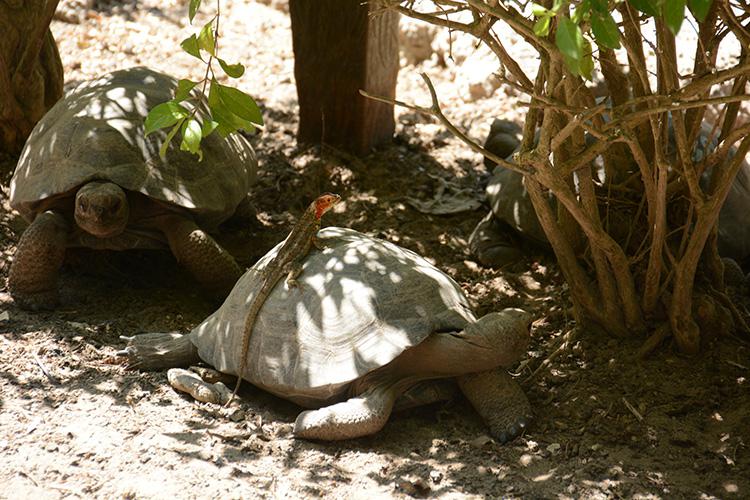Estefania de los Angeles Boada Viteri
This project will contribute detailed knowledge of the role that behaviour, morphology and ecological specialisations play in niche delimitation of Microlophus species (lave lizards) from Galapagos. In so doing, I will enhance our understanding of the process of evolution of closely related species, which have evolved in different biogeographical conditions. Additionally, for the first time, I will provide an accurate census of lava lizard populations on the different islands. This project is important because understanding the behaviour and ecology of Ecuadorian lava lizards has been largely overlooked but is crucial for conservation of entire ecosystems, as well as fundamental knowledge for future captive breeding programs. If these species are indeed highly specialised, then they will be particularly vulnerable in the face of expanding human settlements and habitat change.

Adult female of Isabela lava lizard (Microlophus albemarlensis) basking on a Galapagos tortoise (Chelonoidis genus). © Estefany S. Guerra-Correa.
The Galapagos Islands have been recognized as one of the most important ecosystems in the world. Its fauna and their evolutionary history have caught the interest of scientists worldwide, thanks in part to the work of Charles Darwin and his theory of evolution by natural selection. However, population growth and unsustainable tourism in the last 10 years are threatening the equilibrium of this fragile ecosystem. For this reason, conservation programs have increased to preserve many Galapagos species.
Most conservation work has focused on emblematic species. The Galapagos lava lizards (Microlophus genus) are ten endemic species from the Galapagos archipelago and they are key organisms in this ecosystem. They serve as prey for endemic species like the Galapagos hawk, but also a pollinator role for some endemic plant species. Additionally, previous behavioural and phylogenetic data have revealed a complex social structure and genetic diversification. However, the data is very limited and focused on only a few Galapagos Lava Lizard populations.
My project will be based on the Galapagos Islands and will include survey of the Wreck Bay (San Cristobal Island), Black Beach and Las Cuevas (Floreana Island); Punta Espinoza and Cabo Douglas (Fernandina Island); Caleta Bucanero and Sullivan Bay (Santiago Island); Islote Osborn and Gardner Bay (Espanola Island); and Santa Fe Island. From November 2019 to January 2020 standardized protocols will be used to collect valuable foundation knowledge about the population status of the lava lizards on the Galapagos Islands. In addition, behavioural methods will allow us to obtain information about habitat and microhabitat use, environmental influences, social interactions, and by comparing populations, the potential adaptation to different ecological and anthropogenic conditions. Therefore, my standardised methods will provide quantitative data on lava lizard species on the Galapagos Islands. This information will be provided to management authorities to assist them in conserving the entire ecosystem.
This behavioural ecology project is relevant to conservation as it will allow us to document habitat use, foraging ecology, antipredator behaviour, breeding requirements, and social interactions. Managing species in their natural environments must consider this information, and this will become increasingly relevant in the face of climate change, habitat modification, and human development.